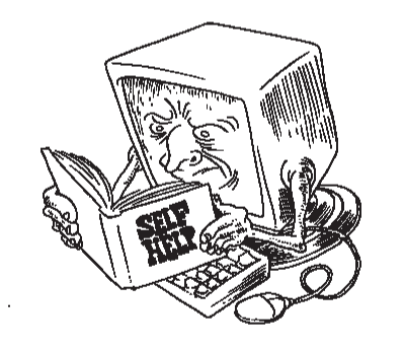It hasn’t been easy being a computer programmer these past few months, what with a half-dozen glossy weeklies screaming at you in hundred-point font: Is Your Job Going Abroad? Add to that the SCO threatening to sue Linux users into the ground for copyright infringement (among a host of other bullshit charges), and you, Poor Programmer, have just received a double whammy in the jaw and the nuts.
Not four years ago, the IT bandwagon was the best ride in town. Then came the bust of course, and now—well, let’s just say I know more than a few coders who’ve mused half-jokingly about moving to Bangalore. Alarmist hand-wringing? Programmers have always been a nervous bunch prone to paralyzing social insecurities coupled with verbal over-expressiveness. Indeed, what other profession (besides writing) combines self-imposed solitude with repetitive linguistic acrobatics?
To be perpetually caught up in our own code, literally and figuratively, is the programmer’s fundamental dilemma. Job flight overseas may just be the latest manifestation of the “way the business world turns” (per Believer contributor Jyoti Thottam’s recent Time cover story) but it’s also true that a technologist’s job is to ruthlessly remove inefficiencies from everyday work—to streamline, to reduce. And a fundamental part of those inefficiencies is the technologist himself, a needy and expensive human being who will inevitably be replaced with workers who are less needy and less expensive.
Thus does a programmer seal his own fate by participating in a profession founded on the supremacy of best design. HAL kills his creator. The world of computer programming is filled with contradictions and ironies. To understand it fully, one must become part of it, because in the end, programming culture is computer code—syntax, logic, operating systems, telecommunications. A bitstream of pure energy. It’s not enough to stand outside looking in. The stream has to flow through you.
Much has been written about how cool it is to be a programmer. Much less has been written about the day-to-day reality of writing computer code—the tedium, the career-related anxieties. Increasingly expendable, programmers today are faceless foot soldiers in a war waged by their rapacious employers, whom the media like to both worship and vilify. (60 Minutes II dubbed Oracle’s Larry Ellison the World’s Most Competitive Man, alternating scenes of boyish gumption with moments of pure megalomania. Apparently, a benevolent dictatorship is still a dictatorship.)
Reclaiming computing culture from Fortune 500 hyperbole means going back to the source code, to a place where a semicolon can mean the difference between success and failure. It’s only at this hyper-granular level where we can hope to undo the webs we’ve weaved for ourselves.
*
As any programmer will tell...
You have reached your article limit
Sign up for a digital subscription and continue reading all new issues, plus our entire archives, for just $1.50/month.
Already a subscriber? Sign in





